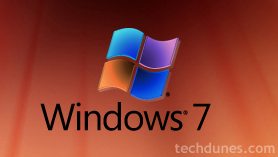
Windows 7 comes with great new features that allow users to work faster and more efficiently. The first noticeable change is the windows task bar. The new enhanced version allows you to work with your applications in different ways. Hovering over an icon for an application show you current windows opened and then if you hover over each window you’ll see the application in full screen in the background. You can close windows using this view or if you click on one it will bring it to the foreground so you can work with it.
Another good change is the option to pin applications to your taskbar. You can pin any program to it just by dragging and dropping it. Jump lists are also a good addition in Windows 7. They allow you to work with an application in the context of the app itself so if you right click on an application you receive a jump menu that gives you some options to work with like recent documents opened in your word processor or your recent browsing history.
Also another good addition is the Aero Navigation or windows management effects. Aero Peek, located in the bottom right corner of your screen allows you to take a quick peek at your desktop just by hovering it, if for example you want to check a document you just saved. If you click it, it minimizes everything and if you click it again it will bring everything back to its original view.
Another handy tool is Aero Shake. If you click the top bar of any app and shake it side to side, the rest of your programs are minimized. This is useful if you want to work with the content of the desktop, and if you shake it again all your other apps come back to their previous state. The next thing worth mentioning is Aero Snap. It allows you to work with window placement and sizing. If you drag a window to the top of the screen it gets maximized and if you pull it back away from the top it goes to its original size. If you need to work with two windows, you can dock them to the side of the screen just by dragging them and they snap to a half screen view. This is handy working with file transfers between two folders or working with two documents if you are comparing them or copying from one to another.
Windows 7 also comes with some network configuration improvements. With Windows Vista, sometimes you had to go through a longer process to get network connection going. Now with basically three clicks, one on the network status icon, one on the network you want to connect to and then one on the connect button you’ve connected to a new network so the process is really simplified.
Another great improvement in Windows 7 are the changes made to the User Account Control. The UAC was one of the unfortunate acronyms with Vista that everybody learned to hate, but it seems that the developers have learned from their previous mistakes so here are some improvements. If you go to the Action Center which you can find in the bottom right corner of the screen, on the left side you have the User Account Control Settings. Clicking on that brings you to a slider which allows you to set the level of UAC prompts that you want to have. Grabbing the slider and dragging it to the top means you will get notified for every action and if you drag it all the way down to the bottom you have a situation where you’re not getting notified for anything.
Other new features that come with Windows 7 can be found in Device Management. If you click on the start button you can see you have devices and printers on your menu which opens a list that shows devices currently connected to your system. For example here you can check the status of your printers or add new devices.
The Problem Steps Recorder is also a great new feature in Windows 7. You can access it by typing ‘psr’ in the start menu search field. After you start it you can reproduce any problem you have with your operating system and it will record all the actions you did, take screenshots and create a zip file with this report that can be sent to a more experienced user who can figure out a solution.
This article is written by Kevin Moor who writes for datarecoveryreview.net/, a site featuring interesting and informative reviews on data recovery.
